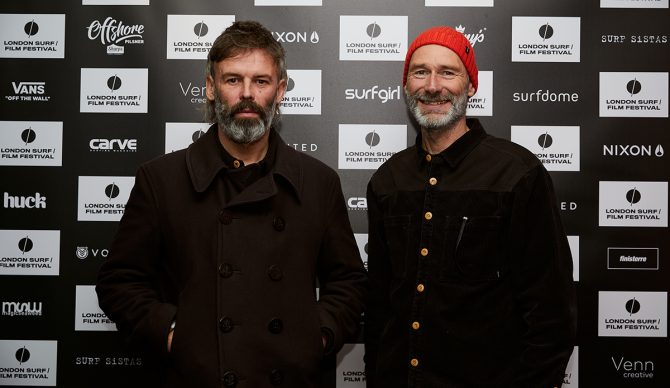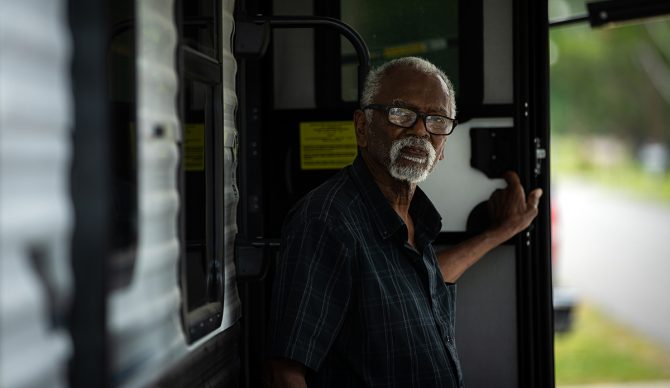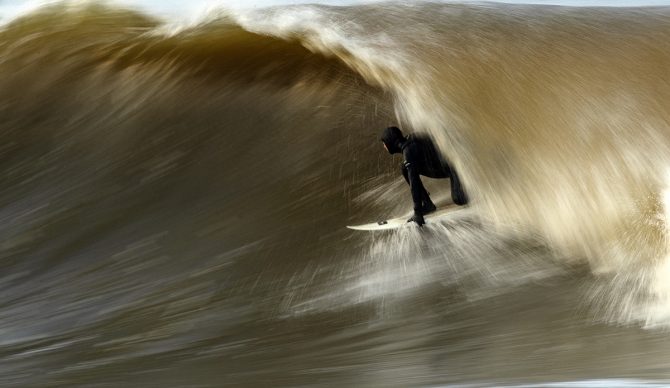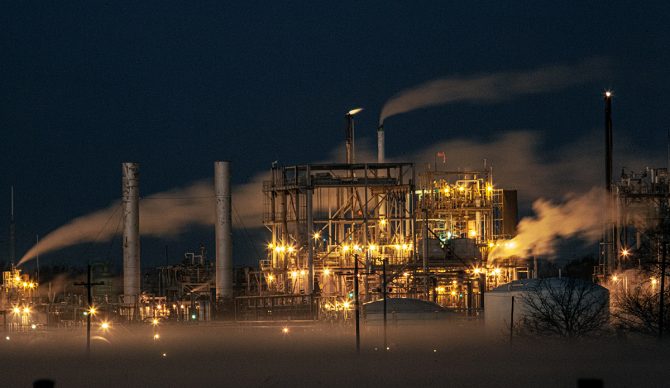Most of us wear wetsuits to ride waves. And that’s why most of us should be keenly interested in The Big Sea, a new documentary that has investigated the links between the production of neoprene in Louisiana to the increased risk of cancer for residents.
Chloroprene rubber used in wetsuits is produced by the Japanese chemical company Denka. The filmmakers, Lewis Arnold and Chris Nelson, traveled to the Denka factory, the only one in the U.S., located on the site of a former slave plantation in St. John’s Parish, Louisiana.
The EPA states that the cancer risk to the community here is the highest in the USA – 50 times the national average, due to the chloroprene emissions from the Denka facility. Hence the area’s unwanted nickname, “Cancer Alley.” A school and large tract of homes back onto the fence line of the factory. Arnold interviewed local activists and community members affected by the toxic production of chloroprene. He calls it surfing’s dirty secret and believes people are dying because of it.
The Big Sea, currently going through the final edit stage, but having had some selected screenings already in the UK, might be the most important surf documentary of recent times. Now, granted, that it isn’t a well-stacked field. The best surf documentaries tend to be either based on surfing icons (Andy Irons: Kissed by God), drugs (Sea of Darkness) or movements (Bustin Down The Door, Girl’s Can’t Surf, Momentum Generation).

The men behind the movie, Lewis Arnold and Chris Nelson. Photo: Adriana Lozano
There have been some great surf films with environmental protection at their core – like The Fisherman’s Son and Groundswell. Manufacturing Stoke and Double Barrel are some of the better examples, too. The Big Sea however might have a much bigger impact due to its universality – every surfer has owned a wetsuit, but very few are aware of the manufacturing process that has links to cancer.
“Right now, the production of neoprene is putting a price on people’s lives,” said Director Lewis Arnold, a surfer and photojournalist from the Northeast coast of England. “It’s easy to distance yourself from that. Look, I’m just a past-it surfer from the North Sea, but as a journalist, I feel a responsibility to get the facts out there. Surfers can then make a choice.”
Now neoprene made at the Denka facility isn’t just used for making wetsuits. It is also a key component in the making of bags, bandages, fabrics, adhesives, caulks, and other goods used in construction, vehicles and machinery.
“While there are many uses of Neoprene, Denka uses wetsuits as the ‘poster child’ of the Neoprene industry – selling the dream of a clean, green, healthy lifestyle, made from a product that is anything but,” said the film’s producer Chris Nelson.

The movie showcases people who’ve been living in ‘Cancer Alley.’ Photo: Lewis Arnold
The filmmakers contest that the surf industry, and by extension the surf media, have been complicit. Whether through its supply chains using Denka neoprene, or “greenwashing” through advertising using limestone, it has had the chance to transition away from chloroprene but has failed to do so.
It’s a charge that the surf industry and wetsuit brands refute. Vipe Desai, the Executive Director of SIMA, said, “No surf brands that we know of are sourcing neoprene from the facility in Louisiana’s Cancer Alley. And again, the Denka facility producing chloroprene rubber chips for surf wetsuits in Japan is not connected to any elevated cancer risks per our knowledge.”

Plant based might be the way. Surfer Sandy Kerr. Photo: Lewis Arnold
However, the elevated cases of cancer caused by the plant isn’t fresh news. The Guardian newspaper did a year-long series of exposes on the issue back in 2015. Brands like Patagonia have also long been highlighting the issues surrounding the production of Neoprene while promoting the benefits of an alternative natural plant-based rubber for wetsuits, of which Yulex is the market leader.
“There’s a lot of awful stuff going on in the world and you can get a sense of futility. But there is a solution here, which is really the point of the film,” said Arnold. “Natural rubber is grown from plants, uses no petrochemicals and has 80 percent less carbon emissions in the process. And look, I surf in the North Sea, one of the coldest surfing environments, and I’ve found Yulex as warm and flexible as the neoprene-based wetsuits.

The plant at the heart of the story. Photo: Lewis Arnold
The film however isn’t all images of chemical plants and testimonies. Relatively unknown, but supremely talented, surfers have been shot artistically in quality waves in California, Europe, and Australia. The simple joy of surfing (all done in plant-based rubber wetsuits) rubs up against the harrowing experiences of the Louisiana residents in a way that subtly enhances the film’s premise.
If we can believe the film’s well-articulated and artistically supported thesis, surfing has a dirty secret. This film shows what it is and what surfers can do about it. Everyone that has ever worn neoprene will need to watch it.
Find out more about release dates at TheBigSea.org.

